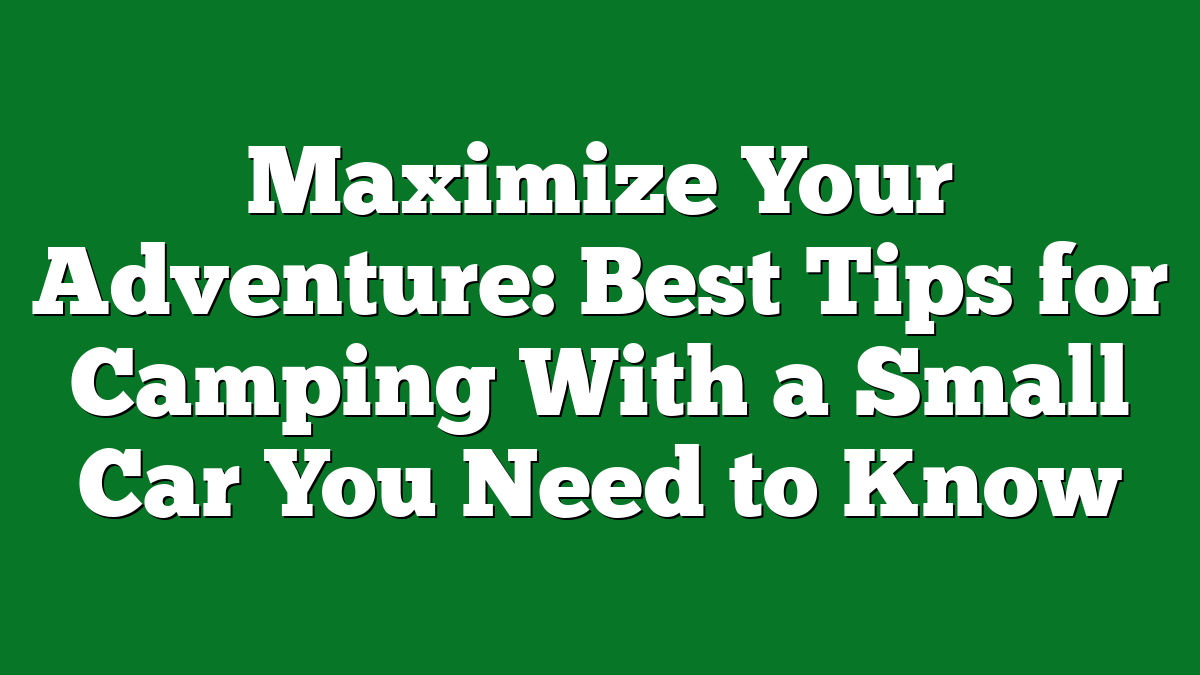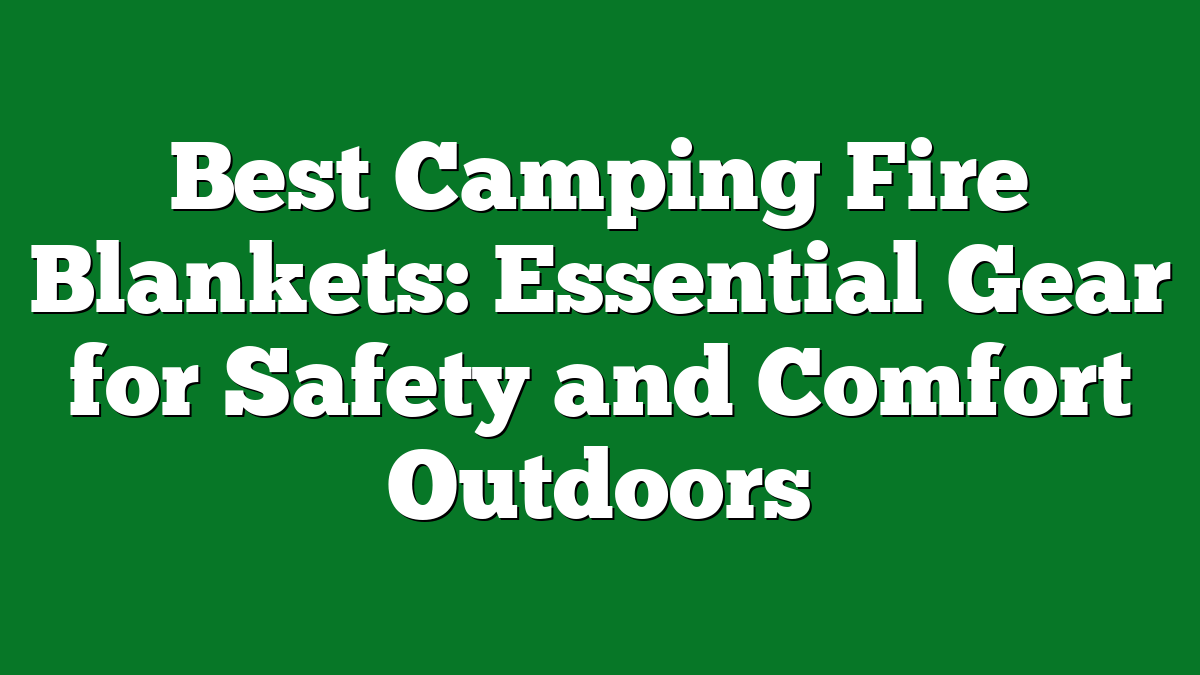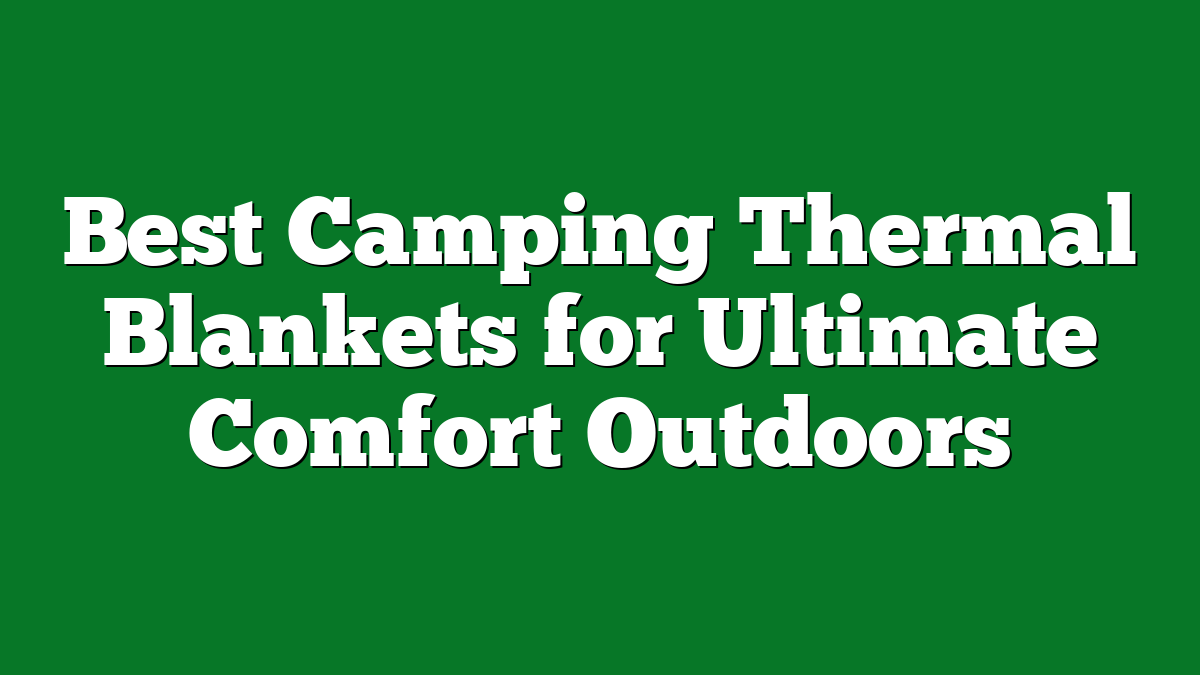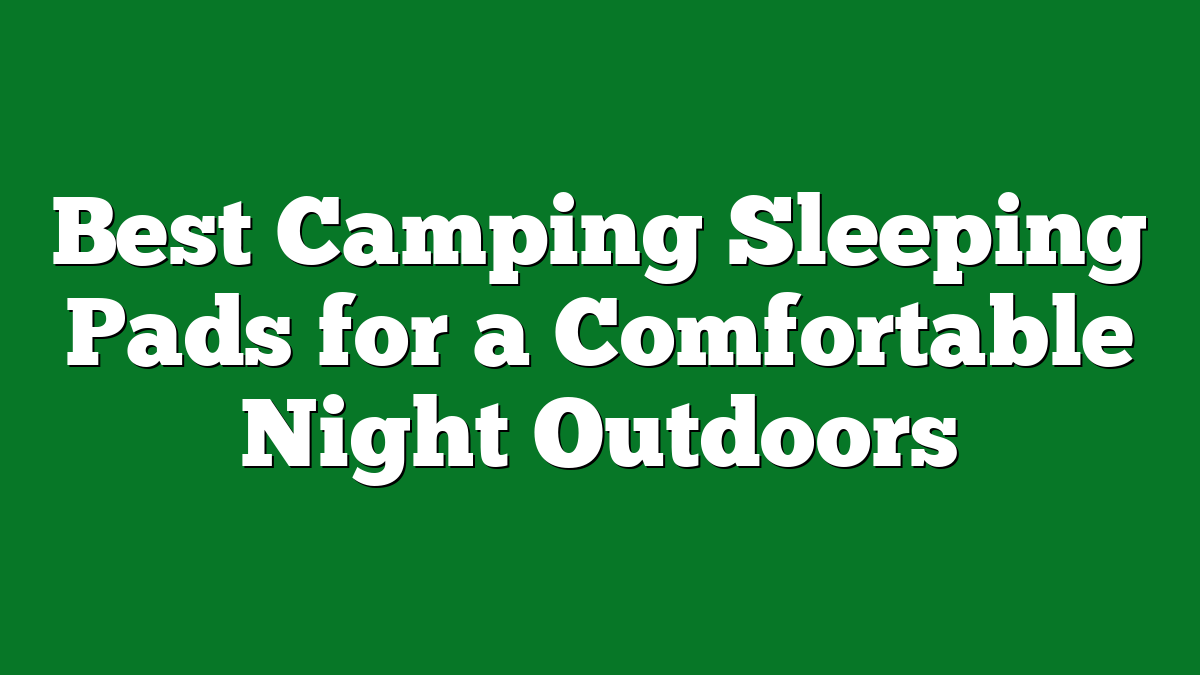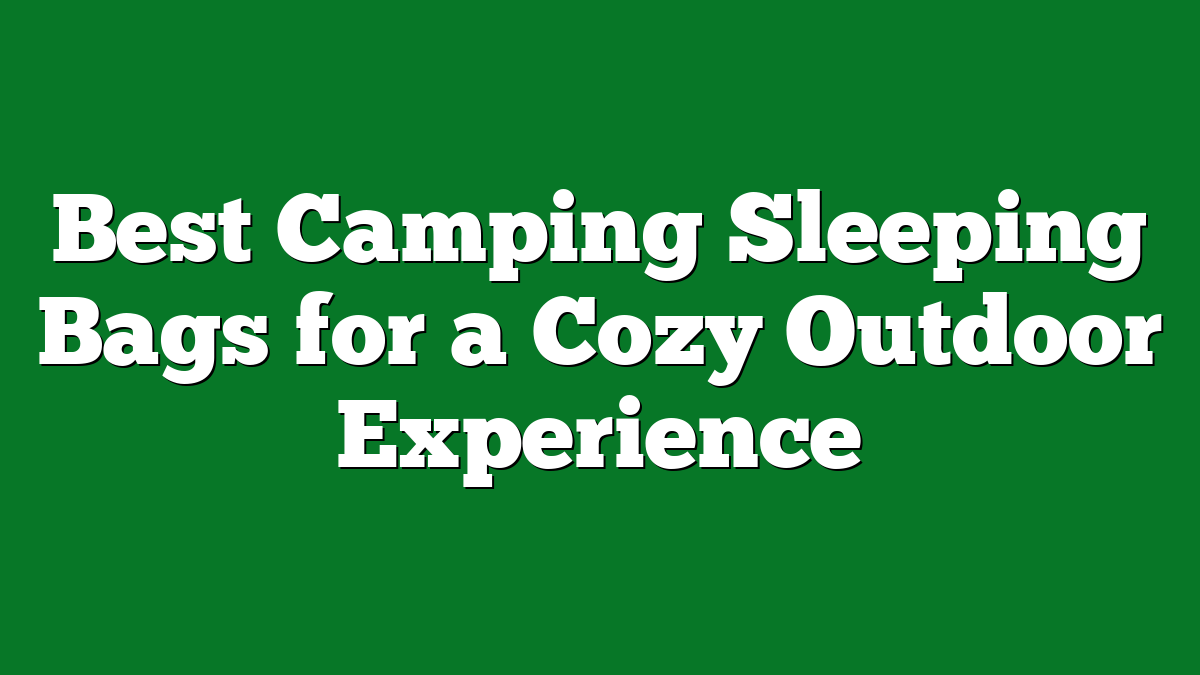Camping with a small car might seem challenging, but it can be an adventure full of fun and creativity. I’ve learned that with the right tips and tricks, you can maximize your space and enjoy the great outdoors without feeling cramped. Whether you’re a seasoned camper or just starting out, there’s something special about hitting the road with just the essentials.
Best Tips for Camping With a Small Car
Camping with a small car can be a rewarding experience. Here are some practical tips to make the most of it:
- Choose Compact Gear: Opt for lightweight tents, sleeping bags, and cooking equipment. Consider brands that specialize in ultralight camping gear.
- Use Space-Saving Techniques: Pack items vertically and utilize gaps within the trunk. Consider compression bags for clothing and bedding to maximize space.
- Plan Meals Wisely: Prepare easy-to-cook meals. Use compact cooking systems like portable stoves and lightweight cookware. Bring freeze-dried meals, as they require minimal space.
- Select Multi-Functional Tools: Rely on utility knives, multi-tools, and collapsible dishes. These tools save space while providing various functions.
- Organize Strategic Storage: Use bins or bags to keep similar items together. Label each container for easy access to gear when setting up camp.
- Utilize Roof Racks: If equipped, install a roof rack for larger items like kayaks or bikes. Roof storage increases capacity without sacrificing trunk space.
- Pack Smart for Comfort: Bring lightweight chairs that fold easily and setup quickly. Enjoying evenings around the campfires enhances the camping experience.
- Prioritize Safety Gear: Always pack essentials such as first aid kits, fire-starting tools, and navigation devices. Safety should never take a backseat to convenience.
- Scout Campsites Ahead: Research campsites before arrival. Look for sites that accommodate smaller vehicles, ensuring access to fitting spots with minimal hassle.
- Embrace Minimalism: Accept that a smaller car limits space, which encourages smart packing. Focus on essentials and enjoy the simplicity of nature.
By following these tips, I’ve discovered that camping with a small car opens the door to new adventures while fostering a deeper connection to the outdoors.
Planning Your Trip
Planning a camping trip with a small car requires careful thought. Proper preparation makes all the difference in the quality of your experience.
Choosing the Right Destination
Choosing the right destination plays a vital role in a successful camping trip. I focus on locations accessible for small vehicles, prioritizing campsites with well-maintained roads. Researching the campsite helps determine its amenities, like restrooms and water sources, which can enhance comfort. Checking reviews also gives insights on space constraints, especially for small car parking. National parks and designated campgrounds often provide suitable options, while rural areas might offer hidden gems worth exploring.
Making a Packing List
Making a packing list ensures I bring only essentials without cluttering my small car. I categorize items into sections: camping gear, food supplies, clothing, and safety equipment. Prioritizing lightweight, compact gear is key; opting for a portable cooking stove, compressed sleeping bags, and foldable chairs maximizes available space. I include multi-functional tools, such as a pocket knife or multi-tool, to reduce the number of items. Packing in soft-sided bags or bins helps utilize every inch of space efficiently. Always double-check for important safety gear, including first aid kits and flashlights, to ensure I’m prepared for any situation.
Maximizing Space in Your Small Car
Camping with a small car pushes my creativity and resourcefulness to the limit. I’ve learned that utilizing every inch of space can transform a cramped vehicle into a cozy adventure hub.
Efficient Packing Techniques
Packing efficiently is a game-changer. I start by choosing lightweight and compact gear. Items like a two-person tent, a portable stove, and sleeping bags that compress easily save valuable space. I roll clothing instead of folding it—this method not only saves space but also reduces wrinkles. When I prep meals, I focus on dehydrated foods and snacks that fit easily in compact containers. I’ve found that making a detailed packing list helps avoid bringing unnecessary items, allowing me to stick to essentials.
Organizing Your Gear
Organizing my gear maximizes space and efficiency on the road. I use soft-sided bags for clothing and gear instead of hard suitcases. These bags mold around car shapes, filling gaps that hard cases can’t. In my trunk, I designate sections for food, tools, and camping equipment. I opt for clear bins to store items separately, making it easy to find what I need without unpacking everything. Hanging organizers on the back of the front seats provide extra storage for smaller items, from first aid kits to chargers. By keeping everything organized, I streamline setup and teardown, allowing more time to enjoy nature.
Essential Gear for Small Car Camping
Camping with a small car requires strategic planning and the right gear. Packing efficiently maximizes space and enhances comfort during your outdoor adventures.
Must-Have Camping Equipment
- Tent: Choose a lightweight and compact tent that can accommodate all occupants. Look for pop-up or backpacking models that set up quickly.
- Sleeping Bag: Opt for a sleeping bag that insulates well and compresses into a small size. A mummy-style sleeping bag often provides excellent warmth-to-weight ratios.
- Portable Stove: A compact camp stove can simplify meal prep. Look for models that use canister fuel for easy ignition and portability.
- Cooking Gear: Use nesting cookware to conserve space. A set that includes a pot, pan, and utensils efficiently fits into your small car.
- Cooler: A compact cooler keeps food fresh. Consider one that doubles as a seat or table, enhancing utility at your campsite.
- Multi-Tool: A good multi-tool covers various functions. Ensure it includes pliers, a knife, and screwdrivers to handle diverse tasks.
- Flashlight or Headlamp: Pack a lightweight, rechargeable flashlight or headlamp. This equipment provides essential visibility during nighttime activities.
- First Aid Kit: Always carry a compact first aid kit stocked with Band-Aids, antiseptic wipes, and pain relievers. Safety comes first on any adventure.
Comfort Items for Long Trips
- Camping Chair: A portable camping chair adds comfort around the campfire. Look for lightweight folding options that fit snugly in your car.
- Portable Hammock: A nylon hammock provides relaxation between trees. It’s easy to pack and sets up quickly, perfect for lazy afternoons.
- Travel Pillow: A compressible travel pillow improves sleep quality. Pick one that fits your backpack or car’s storage compartments easily.
- Wet Wipes and Hand Sanitizer: These items increase hygiene while camping. They’re easy to pack and ensure cleanliness during the trip.
- Lightweight Blanket: A cozy, lightweight blanket offers warmth during cool evenings by the fire. Choose one that packs down small.
- Comfortable Clothing: Layering is essential for outdoor comfort. Loose, moisture-wicking clothes and sturdy shoes enhance movement and keep you dry.
- Outdoor Games: Pack lightweight games or cards. Keeping activities on hand fosters fun and connection with fellow campers around the site.
By bringing these essential and comfort-focused items, I’ve kept my camping experiences enjoyable and hassle-free while exploring the great outdoors.
Safety Considerations
Safety remains a top priority when camping with a small car. I emphasize taking steps to ensure both vehicle and personal safety while enjoying the great outdoors. Here are some essential details worth noting.
Vehicle Maintenance Tips
- Check Fluids: Regularly check oil, coolant, brake fluid, and windshield washer fluid levels. Keeping these at optimal levels helps avoid breakdowns.
- Inspect Tires: Examine tire tread for wear and make sure air pressure meets manufacturer recommendations. Properly inflated tires improve fuel efficiency and handling.
- Test Battery: Ensure the battery is in good condition. Cold weather and long trips can strain it, so it’s prudent to check terminals for corrosion and battery health.
- Review Brakes: Listen for unusual sounds when braking and pay attention to how the vehicle responds. Immediate action on issues prevents serious safety concerns.
- Ensure Lights Work: Check headlights, taillights, and turn signals before hitting the road. Visibility improves safety, especially during nighttime driving or adverse weather conditions.
Choosing Safe Campsites
- Research Campsite Accessibility: Before heading out, confirm the campsite welcomes smaller vehicles. Reading recent reviews helps gauge accessibility and overall safety.
- Choose Established Sites: Opt for well-established campgrounds with clear signage, good maintenance, and designated spots for camping. These areas are generally safer and equipped with necessary amenities.
- Secure Water Sources: Position the campsite near clean water sources if possible, but maintain a safe distance from potential flooding or debris flow areas.
- Evaluate Terrain: Look for flat ground away from steep hills or cliffs, reducing the risk of injuries from slips or falls. A clear patch of land also supports stable tent setup.
- Assess Wildlife Guidelines: Research local wildlife activity and guidelines. Safely storing food away from the tent and understanding animal behaviors keeps both campers and wildlife safe.
Incorporating these safety considerations helps ensure that every adventure in the wild turns into a memorable experience.
Conclusion
Camping with a small car can be such a rewarding experience. It pushes me to think outside the box and embrace the beauty of simplicity. I love how it encourages me to connect more with nature and focus on what truly matters.
By using smart packing techniques and choosing the right gear I can make the most of my limited space. It’s all about finding that perfect balance between comfort and adventure.
So whether I’m a seasoned camper or just starting out I can’t wait to hit the road again. Each trip is a chance to create new memories and discover the great outdoors in a whole new way. Happy camping!

